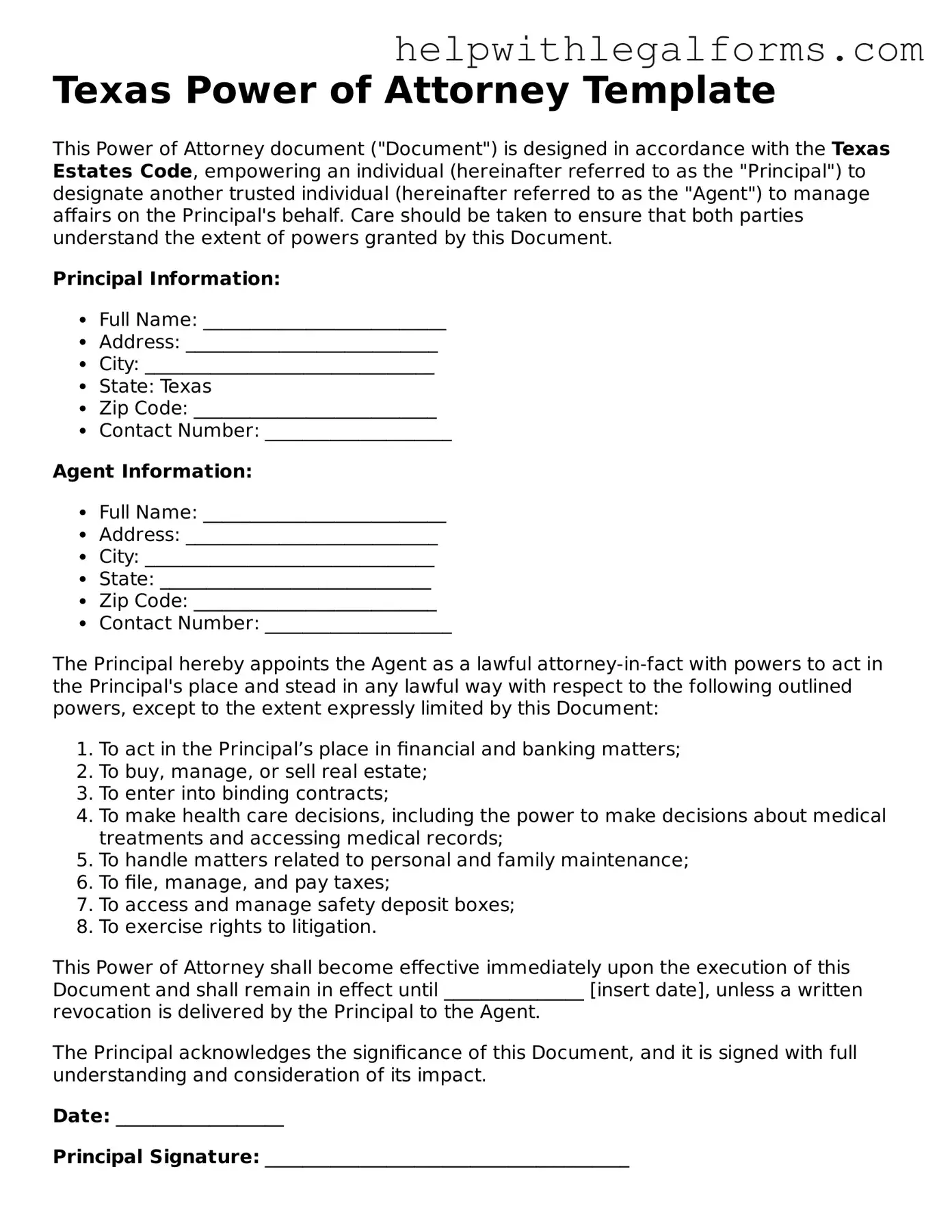Texas Power of Attorney Template
This Power of Attorney document ("Document") is designed in accordance with the Texas Estates Code, empowering an individual (hereinafter referred to as the "Principal") to designate another trusted individual (hereinafter referred to as the "Agent") to manage affairs on the Principal's behalf. Care should be taken to ensure that both parties understand the extent of powers granted by this Document.
Principal Information:
- Full Name: __________________________
- Address: ___________________________
- City: _______________________________
- State: Texas
- Zip Code: __________________________
- Contact Number: ____________________
Agent Information:
- Full Name: __________________________
- Address: ___________________________
- City: _______________________________
- State: _____________________________
- Zip Code: __________________________
- Contact Number: ____________________
The Principal hereby appoints the Agent as a lawful attorney-in-fact with powers to act in the Principal's place and stead in any lawful way with respect to the following outlined powers, except to the extent expressly limited by this Document:
- To act in the Principal’s place in financial and banking matters;
- To buy, manage, or sell real estate;
- To enter into binding contracts;
- To make health care decisions, including the power to make decisions about medical treatments and accessing medical records;
- To handle matters related to personal and family maintenance;
- To file, manage, and pay taxes;
- To access and manage safety deposit boxes;
- To exercise rights to litigation.
This Power of Attorney shall become effective immediately upon the execution of this Document and shall remain in effect until _______________ [insert date], unless a written revocation is delivered by the Principal to the Agent.
The Principal acknowledges the significance of this Document, and it is signed with full understanding and consideration of its impact.
Date: __________________
Principal Signature: _______________________________________
Agent Signature: _______________________________________
Witness Signature: _______________________________________
(Optional: Not required under Texas law but may provide additional validation.)
State of Texas
County of ________________________
This document was acknowledged before me on (date) __________________ by (name of Principal) _______________________.
Notary Public: ________________________
My Commission Expires: __________________
